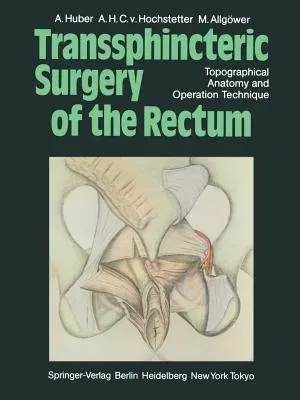A Huber
(Author)Transsphincteric Surgery of the Rectum: Topographical Anatomy and Operation Technique (Softcover Reprint of the Original 1st 1984)Paperback - Softcover Reprint of the Original 1st 1984, 11 January 2012

Qty
1
Turbo
Ships in 2 - 3 days
In Stock
Free Delivery
Cash on Delivery
15 Days
Free Returns
Secure Checkout
Print Length
86 pages
Language
English
Publisher
Springer
Date Published
11 Jan 2012
ISBN-10
3642694721
ISBN-13
9783642694721
Description
Product Details
Book Edition:
Softcover Reprint of the Original 1st 1984
Book Format:
Paperback
Country of Origin:
NL
Date Published:
11 January 2012
Dimensions:
27.94 x
20.96 x
0.53 cm
ISBN-10:
3642694721
ISBN-13:
9783642694721
Language:
English
Location:
Berlin, Heidelberg
Pages:
86
Publisher:
Weight:
244.94 gm

